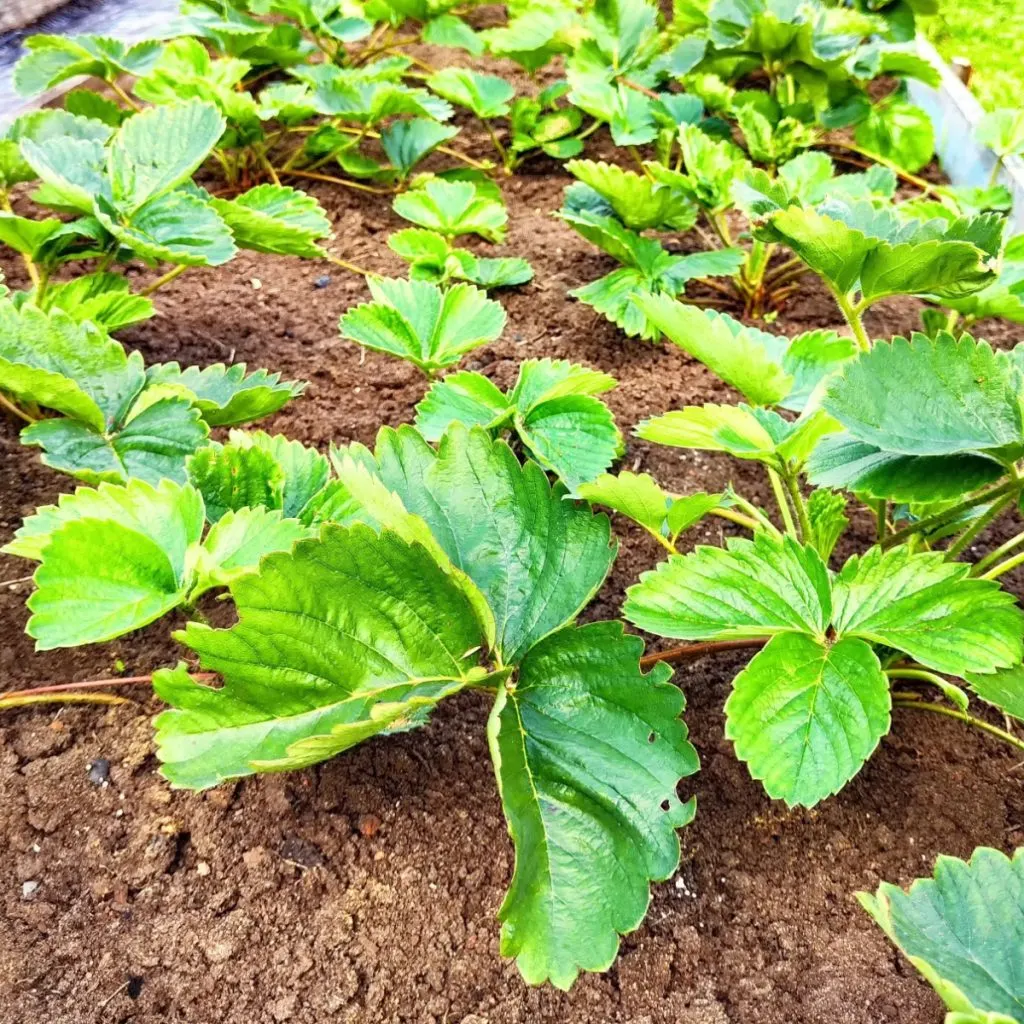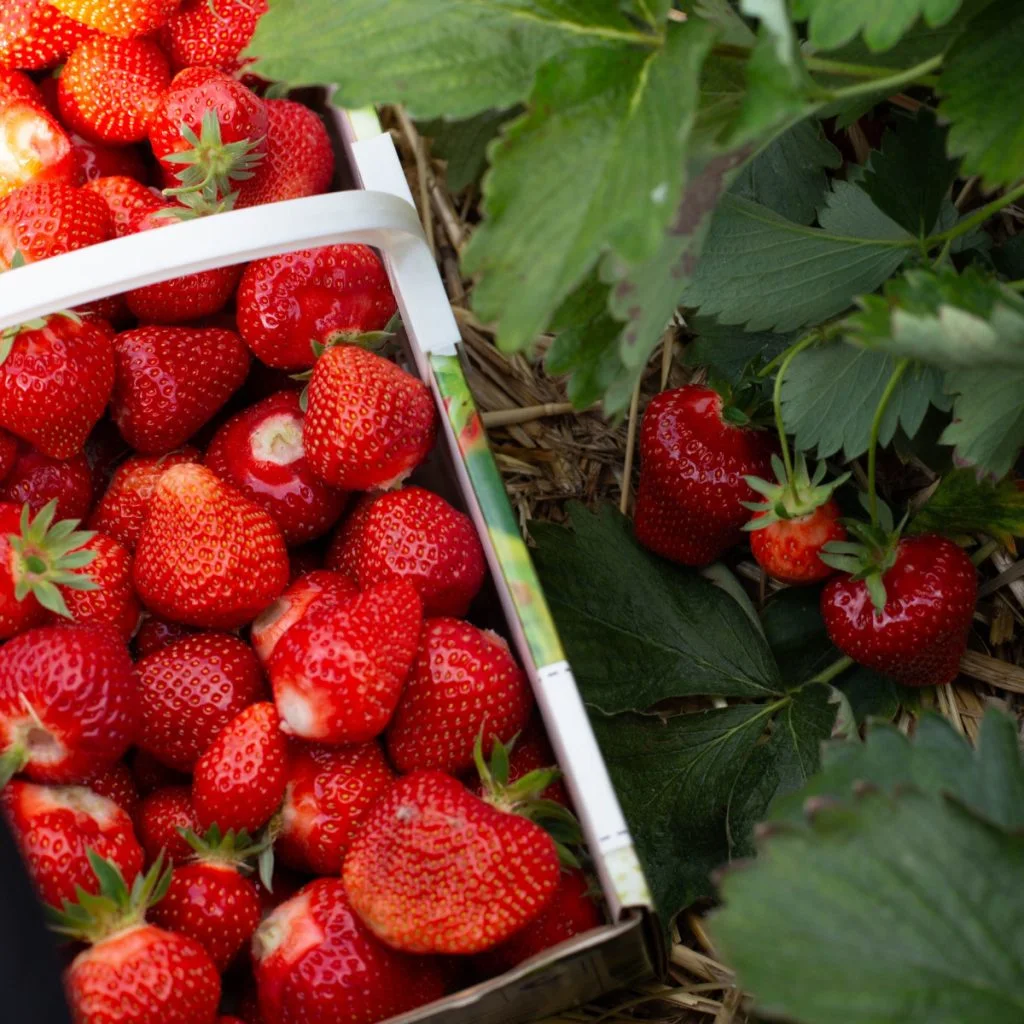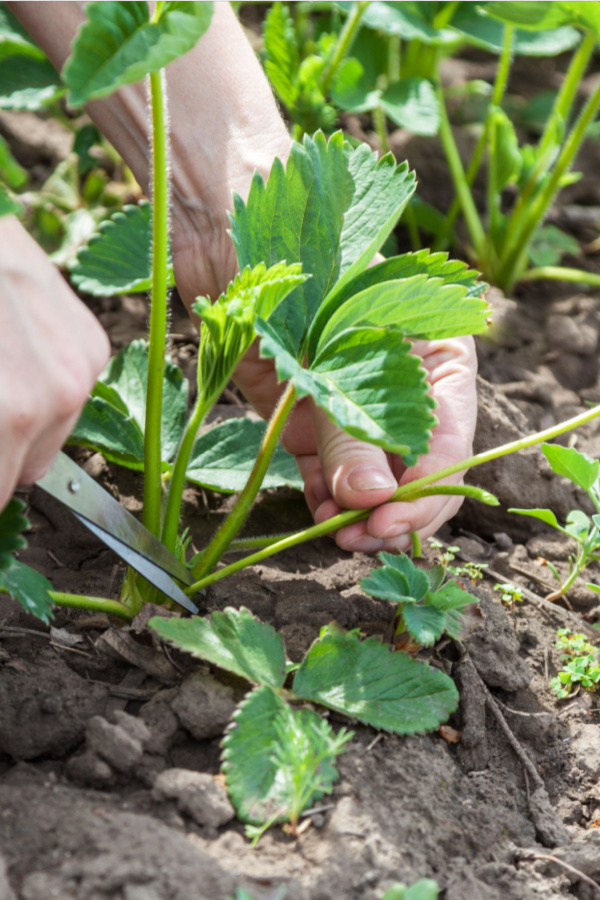Wondering what to do with your June bearing strawberry plants in the summer after your harvest is all over?
If you grow strawberries at home, you already know how exciting it is when harvest time arrives. Picking fresh, sweet berries right from the garden is a treat like no other. But once the harvest is over, many gardeners are left wondering – what now?
The truth is, what you do with your strawberry plants in the summer after they finish fruiting is one of the most important parts of growing strawberries. In fact, how you care for them now can decide just how many berries you’ll be able to pick next year – and how healthy your plants stay over time.

One thing is for sure, summer strawberry plant care is not something to overlook. Your plants may not be making berries anymore, but they are still very much alive and busy preparing for next season. And with just a few simple steps, you can help your plants recover from the effort of producing fruit – and set them up for another great year.
Here is a look at exactly what to do with strawberry plants after harvest – and why doing it now can make all the difference!
What To Do With Strawberry Plants In The Summer
First, Know What Type of Strawberries You Grow
Before you start caring for your plants, it’s important to know what kind of strawberry variety you’re growing. The care they need in summer depends on the type.
June-Bearing Strawberries
These strawberries produce one large crop of fruit each year, usually in late spring or early summer. Once they are done, they stop producing until the following year. They’re commonly grown in raised beds or directly in the ground.
Everbearing Strawberries
Everbearing plants produce multiple smaller harvests throughout the season, usually one in early summer, and then a few more rounds throughout mid summer and fall. These plants are often grown in containers, small beds, or hanging baskets.

Both types need a little help in the summer, but June-bearing strawberries require the most attention after the harvest is finished. That’s when they start growing new leaves, roots, and forming the buds for next year’s fruit.
Cutting Back June Bearing Strawberry Plants After Harvest
If you grow June-bearing strawberries, one of the most important summer tasks is to trim the plants back right after they finish fruiting. This gives the plants a fresh start and helps them grow strong again.
Once your last berries are picked, wait a week or so and then cut off the old leaves. You can use hand shears or even a push mower (set on a high level) if you’re working with a large patch. The goal is to remove all of the old, worn-out leaves but leave the crown and roots untouched.
This trimming does two important things: First and foremost, it helps the plant focus on new leaf and root growth. But it also reduces the chance of disease by removing old, rotting plant material.
Just make sure to trim early. Ideally, within two to four weeks at the latest after the last harvest. If you wait too long, the plant won’t have enough time to regrow before the end of the season. This can lead to weaker plants that won’t handle winter as well, and it can reduce next year’s crop.
For everbearing strawberries, you don’t need to trim them back in the summer. Since they’re still producing fruit, trimming would all but interrupt their growing cycle. If the plants get too large later in the season, you can lightly prune them in early fall.

Fertilizing Strawberry Plants In Summer
Right after you trim back June-bearing strawberries, it’s the perfect time to fertilize them. The plants are entering a stage of rebuilding and need extra energy to regrow their leaves, repair their roots, and begin storing energy for next year’s fruit.
Use a balanced fertilizer with a make-up between 5-5-5 to 10-10-10. Be careful not to overdo it. All that is need is a light feeding to give your plants a boost. As a general rule, a light sprinkle of a 1/2 teaspoon around each plant is good. Affiliate Link: GreenView Multi-Purpose Fertilizer, 33 lb. Bag – NPK 10-10-10
For everbearing strawberries, fertilizing is just as important. In fact, it may be more so since the plants are continually using energy to grow new fruit. Instead of one big feeding, it’s better to give them a small dose every 3 to 4 weeks through late August.
Use the same balanced fertilizer, but apply it more often in smaller amounts. This will help keep your plants strong, blooming, and fruiting throughout the season. For more on fertilizing, check out our article: How To Fertilize Strawberries For Success!
Managing Runners – What To Do With New Shoots
Strawberry plants also send out runners in summer. These are long, skinny shoots that grow out from the mother plant. At the end of each runner, a small new plant starts to form. If it touches the soil, it will grow roots and become a new strawberry plant.
What you do with these runners depends on your garden setup and your goals. If your strawberry patch is older (3-4 years old), allowing a few runners to root and replace the older plants can be a good idea. If, however, your patch is new or already full, you’ll want to cut most of the runners off. This helps the main plant conserve energy.
Letting too many runners grow can weaken the mother plant. This is because it uses up too much energy trying to grow the new shoots. Aim to allow only a few runners per plant if you want to expand, and remove the rest.
If you’d like to start a new row or bed, now is a great time to let the strongest runners take root. You can even place a small pot of soil under the runner tip to help it grow roots, then move it later once it’s established. Everbearing varieties usually produce few to no runners, so this isn’t as much of a concern with those plants.
Watering Strawberry Plants In The Summer
Even though your strawberries may not be producing fruit anymore, they still need water to survive and grow. In fact, keeping them properly watered during the summer is a big key to their long-term health.
Strawberries have shallow roots, which means they dry out quickly in hot weather. After harvest, try to give them about one inch of water per week, either through rainfall or watering. If it’s very hot or dry, you may need to water more often.
At the same time, don’t overwater. Strawberries don’t like soggy soil, and too much water can lead to root rot. Make sure your soil drains well and water early in the day so the leaves can dry out before nightfall.
Container-grown strawberries may need water every day in summer, especially when it’s hot. Just keep an eye on the soil. A good rule of thumb is if it feels dry an inch below the surface, it’s time to water.
Don’t Forget To Mulch!
Mulching your strawberry plants is another must to help keep them healthy during the summer. A layer of mulch helps in many ways:
- It holds in moisture, reducing how often you need to water.
- It keeps weeds away, so your plants don’t have to compete for nutrients.
- It helps keep the soil cooler, which is important in hot weather.
Good mulch choices include straw, shredded leaves, pine needles, or grass clippings. For summer, spread a 2 to 3-inch layer around the base of your plants. Be careful not to pile it directly against the plant’s crown.
In late fall, you’ll want to add a thicker layer of mulch (4 to 6 inches) to protect the plants over winter. This is especially important in colder climates where winter damage is more likely. For potted strawberries, consider bringing them into a sheltered spot like a garage or shed once winter approaches. The roots in containers are more exposed and need extra protection.
Replacing Old Plants
Even with the best care, strawberry plants don’t last forever. Most plants start to lose strength and produce fewer berries after about 4 to 5 years.
To keep your strawberry patch strong, it’s a good idea to replace a few older plants each year with healthy runners. That way, you always have fresh plants ready to take over when the older ones slow down. Use runners you’ve saved and planted in summer to grow your replacements. Just make sure they have plenty of time to get established before winter sets in! Happy Gardening – Jim & Mary.
Old World Garden
Jim and Mary Competti have been writing gardening, DIY and recipe articles and books for over 15 years from their 46 acre Ohio farm. The two are frequent speakers on all things gardening and love to travel in their spare time.
As always, feel free to email us at thefarm@owgarden.com with comments, questions, or to simply say hello! You can sign up for our free email list in the subscribe now box in the middle of this article. Follow us on Facebook here : Owg facebook. This article may contain affiliate links.



